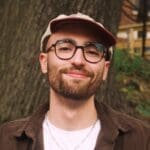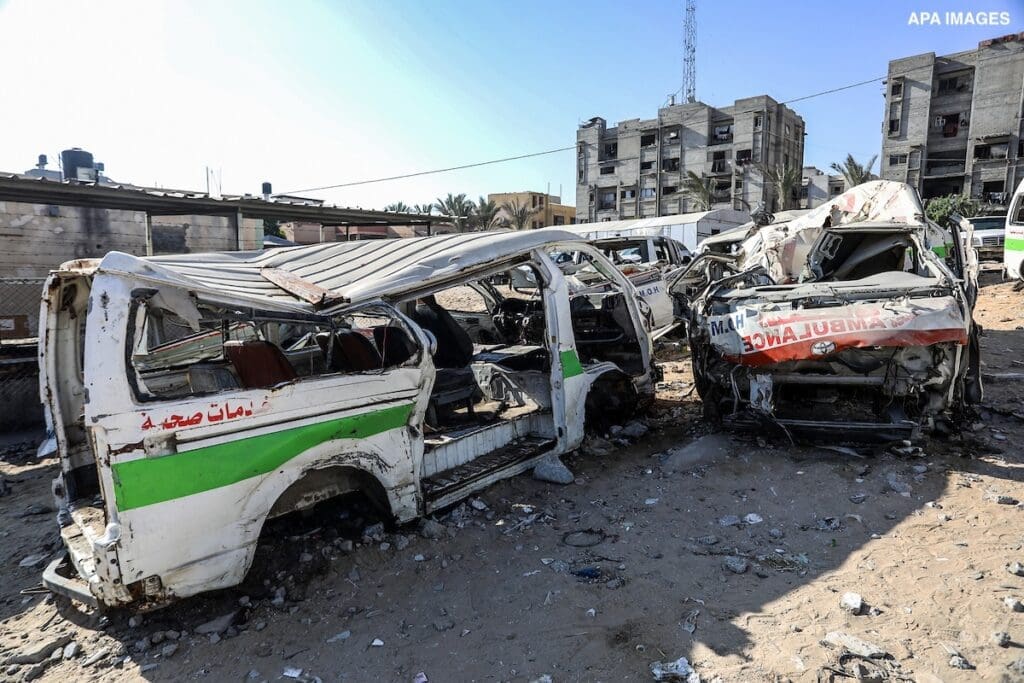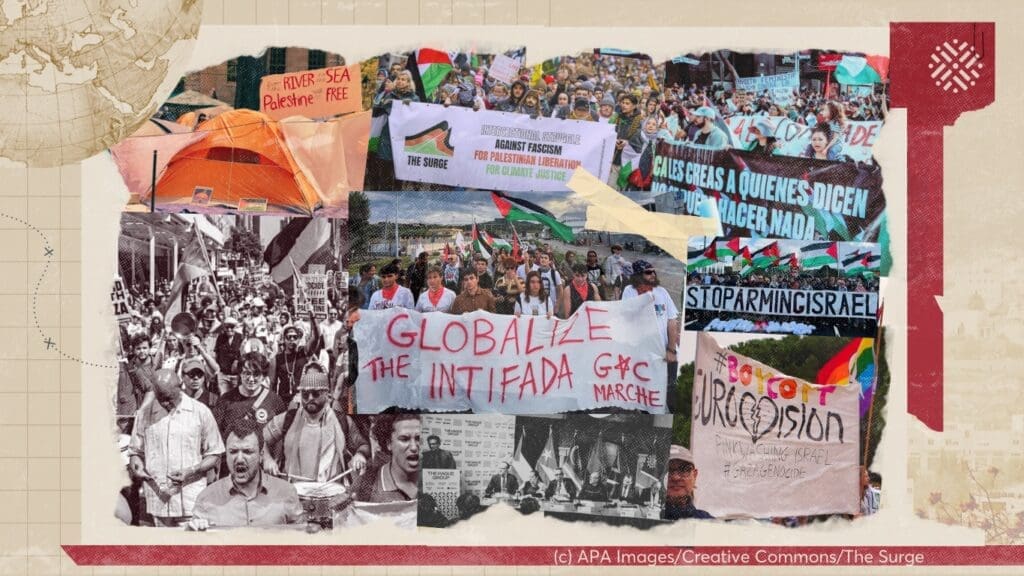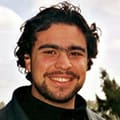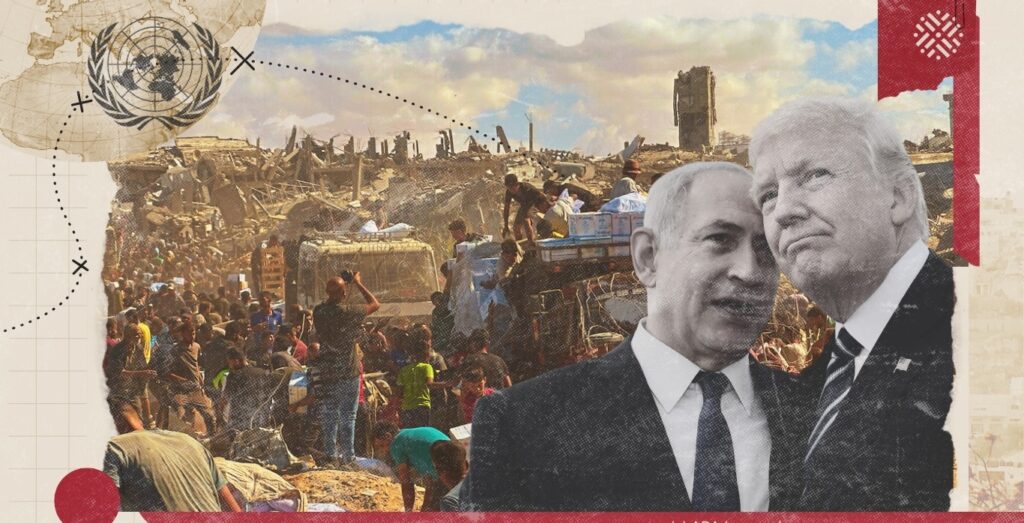
Executive Summary
Israel’s military occupation and siege of the Occupied Palestinian Territory (OPT) have directly contributed to Palestinians’ deteriorating health system and to their inability to mitigate the disastrous effects of the COVID-19 pandemic. As an occupying power, Israel has responsibilities under international humanitarian law (IHL) to the Palestinians which it has consistently failed to carry out, including the provision of public health. Instead, Israel has contributed to the “de-development” of the Palestinian health sector and it has restricted Palestinian initiatives to respond to the pandemic throughout the OPT.
Several articles under section III of the 4th Geneva Convention describe the responsibilities of an occupying power towards civilians in occupied territories. UN Special Rapporteur for human rights in Palestine, Michael Lynk, “has previously noted that Israel is in ‘profound breach’ of its international obligations with regards to the right to health of Palestinians living under occupation.” Israel’s blockade and continuous assaults on the Gaza Strip have led to shortages in food, electricity, and medical supplies, including desperately needed and life-saving ventilators. In the West Bank, continued land loss and underfunding, and Israel’s strict restrictions on imports and exports, have crippled the Palestinian Authority’s (PA) ability to fund a faltering health sector.
This de-development of the Palestinian health sector, which predated the pandemic, has led to the deterioration of Palestinians’ health, making them especially vulnerable to the severe symptoms associated with COVID-19. In addition, the PA has largely failed to respond to the pandemic due to limited investment in the health sector and Israel’s apartheid infrastructure in the form of checkpoints, border crossings, the separation wall, and the permit system. In 2019, only 64% of medical permits were approved from Gaza, and 81% from the West Bank. And in spring 2020, after the PA stopped civil coordination with Israel following Israel’s annexation plan, Israel only approved half of the medical permit requests from Gaza.
As for Israeli aid to Palestinians during the pandemic, Danny Danon, the Israeli ambassador to the UN, has said that, “Palestinians need to choose. If they want to continue receiving coronavirus aid, they need to stop the incitement.” In other words, Palestinians must prove that they deserve aid, without criticizing the Israeli government’s behaviors, or risk being accused of incitement and anti-Semitism. What is more, in April 2020, Defense Minister Naftali Bennett indicated that relief to Gaza would be conditioned on whether Israel could recover the remains of two of its soldiers lost in the 2014 war.
In addition to these harsh policies, Israel has blocked Palestinian efforts to tackle the pandemic. For example, Israel not only raided a COVID-19 testing center in Silwan, it also arrested its organizers to prevent “any Palestinian Authority activity in Jerusalem.” As another example, Israeli authorities do not service areas like Kufr Aqab that are technically within Israeli-drawn boundaries, but on the outside of the separation wall. As a result, and since Israel bans PA activity in these areas, Palestinians there are left without any government services. Moreover, incursions and raids by the Israeli military in the West Bank have continued, as well as frequent home demolitions, leading to fears among Palestinians that Israeli soldiers entering or destroying their homes, or staffing the checkpoints, might be infectious.
In light of the devastating economic sector, especially since the pandemic, many Palestinians from the West Bank have sought work in Israel, while those from Gaza are typically not given work permits. In fact, up to 70% of Israel’s construction workforce is Palestinian. Many of these workers come into contact with infected Israelis and consequently, spread the virus throughout the OPT when they return home. And without the health services to test and treat the infected, Palestinians have little hope of effectively stopping its spread.
What is desperately needed to address the public health crisis in Palestine during the COVID-19 pandemic is the following:
- Palestinian leadership must take a “socially collaborative and empowering approach” that meets the needs of Palestinians.
- Israel must release Palestinian political prisoners, especially elderly and chronically ill prisoners, as well as improve conditions for those serving sentences.
- A just resolution to the status of Palestinian refugees throughout the Middle East, including return, as well as implementation of rights in host states, is needed to protect this marginalized population that is disproportionately impacted by the pandemic.
- Israel must lift its siege of Gaza to allow for the entry of medical goods and materials to build health facilities, and to allow the entry of medical personnel to support the understaffed health providers in Gaza.
- The international community must pressure Israel to meet its obligations as an occupying power towards the occupied Palestinian people under the 4th Geneva Convention.
Overview
In March and April 2020, while much of the world was adjusting to a new normal of lockdowns and curfews, many Palestinians experienced a resurgence of familiar circumstances. When the first few COVID-19 cases in the West Bank were identified near Bethlehem, the Palestinian Authority (PA) placed the governate under lockdown. Travel within the West Bank was curtailed in ways reminiscent of the worst periods of movement restrictions under Israeli occupation.1
Moreover, Jordan closed the King Hussein border crossing, the main entry and exit point for West Bank Palestinians; Palestinians who worked in Israel were either sent home or told to stay in Israel; and Gazans, living under a restrictive siege with only two entry and exit points, were subjected to mandated quarantines for anybody returning home to Gaza from abroad. In fact, early in the COVID-19 lockdown period, the blockade of Gaza was portrayed as a potential benefit, as the restricted movement in and out of the territory was thought to reduce outbreak potential.
This policy brief addresses three ways that the legal framework of occupation as defined by international humanitarian law (IHL) has failed the provision of public health to Palestinians in the time of COVID-19. Firstly, it explores the active and passive “de-development” of the Palestinian health system prior to the pandemic. Secondly, it examines the ways in which Israel has not fulfilled its legal obligations towards the Palestinians regarding COVID-19. And finally, it analyzes the ways in which the occupation has worsened the health situation by restricting Palestinian initiatives.
Although IHL is arguably limited in protecting the rights of oppressed populations, this brief uses IHL language to hold Israel accountable for Palestinian public health. In doing so, it argues that even by the imperfect standards agreed upon by the international community, Israel is not fulfilling its minimum legal duties as an occupying power in this time of public health crisis. By failing to meet these obligations, Israel has actively contributed to the deterioration of Palestinians’ health and well-being. The brief proposes several policy recommendations to address the crisis of Palestinian health during the COVID-19 pandemic.
The Legal Framework of Occupation and its Limitations
In the 1967 Six-Day War, the state of Israel seized the Sinai Peninsula, the Gaza Strip, the West Bank, East Jerusalem, and the Golan Heights. Since then, almost all governments and international bodies, including the UN Security Council, the International Court of Justice, the UN General Assembly, and the International Committee of the Red Cross, have recognized Israel as the occupying power in these territories. Yet the state of Israel does not recognize its presence in the Occupied Palestinian Territory (OPT) as an occupation, and, in fact, it has actively disputed it. Israel and its supporters have argued that the nature of Israel’s status or duties as the occupying power changed in the Oslo Accords, and that, at the very least, Gaza is not occupied due to the “disengagement” of 2005. These arguments notwithstanding, almost all international entities have continued to recognize these territories, including the Gaza Strip, as occupied. In response, Israel and its allies have fought to delegitimize the UN and change the framing of “occupation” to an issue of Palestinian intransigence, relying on a narrative that all Palestinians are potential security threats to Israel, thus justifying their collective punishment.
IHL provides a robust framework for the responsibilities of parties involved in armed conflict, and for an occupying power’s responsibilities toward the civilian populations under its control. The 1907 Hague Regulations of land wars reflected late 19th-century conventions for declarations governing the acts of war, and to this day, they are critical to IHL investigations of human rights violations. Article 42 of the Regulations defines a territory as occupied “when it is actually placed under the authority of the hostile army,” and further articles give the occupier a range of responsibilities, including ensuring public safety and preventing seizure of private goods. As a corollary of the 1907 Hague Regulations, the four Geneva Conventions were codified in 1949, further entrenching the protections and rights in warfare, and are considered the core of IHL.
The 4th Geneva Convention, protecting civilians, was adopted after the atrocities of World War II. Section III outlines the protections owed to civilians in occupied territories, which are wide ranging. There are several articles which are relevant in describing Israel’s legal duty to the Palestinian population, especially during this pandemic. Article 53, for example, prohibits destruction of private or public property. Article 55 mandates that the occupying power ensures the food and medical supplies of the population, especially when “the resources of the occupied territory are inadequate.” Article 56 specifically calls on the occupying power to ensure and maintain public health and hygiene, while Article 59 calls on the occupying power to facilitate humanitarian relief efforts.
Importantly, Article 60 explicitly states that humanitarian relief “shall in no way relieve the Occupying Power of any of its responsibilities under Articles 55, 56 and 59.” In other words, the presence of aid by third parties to fill humanitarian needs in the OPT does not displace the Israeli state’s duty to meet those needs to the best of its ability. The UN reiterated this responsibility in March, when UN Special Rapporteur for human rights in Palestine, Michael Lynk, stated that, “The legal duty, anchored in Article 56 of the Fourth Geneva Convention, requires that Israel, the occupying power, must ensure that all the necessary preventive means available to it are utilized to ‘combat the spread of contagious diseases and epidemic.’”
Early in the pandemic, the UN hailed the “excellent” cooperation between Israeli and Palestinian authorities on managing the pandemic. However, the misinterpretation of these efforts as cooperative only serves to entrench the perception of the quasi-state of Palestine and the state of Israel as comparable entities. Additionally, it is important to put this cooperation in context. Michael Lynk “has previously noted that Israel is in ‘profound breach’ of its international obligations with regards to the right to health of Palestinians living under occupation.” This supposed cooperation around COVID-19 is more likely to be related to pragmatic understanding of infectious disease spread, considering the presence of hundreds of thousands of settlers in the West Bank and the constant cross-border traffic of Palestinian laborers into Israel and Israeli soldiers into the West Bank. As has been so often recited in recent months, COVID-19 “does not distinguish between people, nor does it stop at borders.”
The De-Development of the Palestinian Health Sector
No analysis of the fragmented Palestinian health sector today is complete without an understanding of the factors that have brought it to its current state. Social and political determinants of health are deeply embedded in the ways the occupation and its restrictions manifest in all aspects of Palestinian daily life. Indeed, the blockade and continuous assaults on the Gaza Strip have led to shortages of food, electricity, and medical supplies in an environment with destroyed infrastructure. The West Bank has also experienced continued land loss and fragmentation, coupled with consistent underfunding of the social sector under a crippled PA. Health resources are insufficient, especially for mental health needs, women, and youth. Decades of reliance on aid have diminished long-term development and deepened aid dependence.
Palestinians must prove that they deserve aid, without criticizing the Israeli government’s behaviors, or risk being accused of incitement and anti-Semitism Share on XThe PA’s reliance on aid and borrowing has proven especially disastrous in the COVID-19 era, as funding agencies are facing unprecedented global need which has limited their ability to fulfill their aid commitments. What is more, Israel controls all OPT imports and exports and has long banned or restricted imports of materials deemed “dual-use,” meaning they are perceived to pose a security threat. This includes items like cement to build health care facilities, chemicals including fuel for hospital generators, pharmaceuticals, and most medical equipment. This continues to pose significant obstacles to the Palestinian health care system and its ability to respond to COVID-19. In its 2014 assault on Gaza alone, Israel destroyed thousands of homes and an estimated 73 medical facilities, most of which cannot be rebuilt due to the import restrictions. UN observers have consistently criticized Israel for obstructing humanitarian aid to Palestinians and demolishing donor-funded structures.
This economic and infrastructural de-development of Palestine has led to poor states of health for many Palestinians, in turn increasing the likelihood that they would develop the severe symptoms of COVID-19. The OPT reports a high obesity rate while at the same time reporting higher than desired rates of malnutrition, anemia, and type 2 diabetes. The OPT also has also faced a shortage of healthcare personnel for years leading up to the pandemic. In Gaza especially, medical staff have been killed in Israeli military attacks. These threats, the poor and deteriorating economy, and lack of resources encourages some of those who study medicine to work elsewhere.
Beyond the occupation, the PA has largely failed to respond adequately to the pandemic. This was arguably expected, even before its onset in March 2020. Indeed, just before the outbreak, doctors and physicians throughout Palestine went on a month-long strike due to long overdue benefit payments. The destructive effects of the PA’s long-term failure to invest in the health sector are compounded by the Israeli apartheid infrastructure in the form of checkpoints, border crossings, the separation wall, and permit system restricting the movement of people and necessary supplies.
The poor state of the Palestinian health system forces many Palestinians who require advanced health care to apply for medical permits issued by Israel that allow them to enter hospitals in Israel or East Jerusalem. In 2019, however, only 64% of medical permits were approved from Gaza, and 81% from the West Bank. Moreover, after the PA stopped civil coordination with Israel in response to the 2020 annexation plan, and with the UN’s plan to facilitate permits stalled, Israel only approved half of the urgent medical permit requests from Gaza in late spring. Thus, many Palestinians who contracted COVID-19 and who suffered from preexisting conditions have been prevented from receiving adequate medical attention, including access to ventilators.
Politicizing Palestinian Health during COVID-19
While Israel has provided the PA with training and equipment, including testing kits, to control the spread of the virus, Deputy Director of the Economy Division at the Foreign Ministry, Yael Ravia-Zadok, also made clear early in the pandemic that “the Palestinians’ needs in this matter are greater than what the State of Israel is able to provide.” At the same time, Danny Danon, the Israeli Ambassador to the UN, responded to criticism from the PA about Israel’s handling of COVID-19 within the OPT:
The Palestinians are going back to their natural behaviors – anti-Semitism, anti-Israelism, and baseless mud-slinging – and trying to use the situation to gain political points […] My message was very clear: The Palestinians need to choose. If they want to continue receiving coronavirus aid, they need to stop the incitement.
Thus, Palestinians must prove that they deserve aid, without criticizing the Israeli government’s behaviors, or risk being accused of incitement and anti-Semitism. This echoes efforts to punish the Palestinians for seeking statehood at the UN in 2012, when the US withheld $147 million in aid, or when Netanyahu called potential International Criminal Court war crimes investigations of the settlements “anti-Semitic edicts” last year.
As early as January 2020, groups like the United Nations Relief and Works Agency (UNRWA) mobilized to protect Palestinian refugees living in camps from the pandemic. Moreover, the Office for Coordination of Humanitarian Affairs (OCHA) prepared a COVID-19 Response Plan for the OPT in late March, and the Ad Hoc Liaison Committee called for millions of dollars in aid from donors. Countries like Turkey and Saudi Arabia contributed money and medical supplies. The World Bank approved a $30 million grant to help restore household income to families. Even the United States, which had cut off most aid to the Palestinians, including aid to UNRWA and aid that went to hospitals in East Jerusalem, publicized a modest aid contribution to help with their response to COVID-19. Israel also set aside 800 million Israeli new shekels ($236 million) to help the Palestinians with the pandemic in May, but this was in the form of loans fronted by future Palestinian tax revenue, which Israel collects.
Despite multiple accounts of prisoners and Israeli prison guards testing positive for the virus, in July, the Israeli Supreme Court ruled that Palestinian prisoners have no right to social distancing Share on XSome of what is being promoted as cooperation can thus be considered as Israel loosening some of its restrictions on Palestinians to allow other entities to provide aid. Yet Israel has been strategic in its supposed aid to Palestinians. In April 2020, Defense Minister Naftali Bennett indicated that relief to Gaza would be conditioned on whether Israel could recover the remains of two of its soldiers lost in the 2014 war. Bennett even likened the humanitarian crisis in Gaza to Israel’s recovery of its soldiers: “The moment there is talk of the humanitarian world in Gaza – Israel also has humanitarian needs, which are mainly the recovery of the fallen.” And then, in August, in response to incendiary balloon attacks out of Gaza that resulted in dozens of fires, Israel launched air strikes, prevented fuel imports, restricted fishing access, and blocked $30 million in aid from Qatar to Gaza.
Blocking Palestinian Efforts to Tackle COVID-19
While the PA has been critiqued for its poor leadership during the pandemic after its initial effective response instituting swift lockdowns and closures, it must be recognized that the PA lacked sufficient resources and power to go much further. In addition to lacking the autonomy needed to build a functional public health system, Palestinians also lack the autonomy to respond to health crises in real time. In East Jerusalem, where Israel severely limits PA operations, Israeli authorities have neglected to build and promote sufficient testing facilities or provide accurate data, and NGOs had to step in to ensure updated COVID-19 information was available in Arabic.
Further, the Israeli military has consistently stopped Palestinian health initiatives. Israel not only raided a COVID-19 testing center in Silwan, it also arrested its organizers to prevent “any Palestinian Authority activity in Jerusalem.” As another example, Israeli authorities do not service areas like Kufr Aqab that are technically within Israeli-drawn boundaries, but on the outside of the separation wall. As a result, and since Israel bans PA activity in these areas, Palestinians there are left without any government services. It was not until the Palestinian NGO Adalah petitioned the Israeli Supreme Court that Israeli health authorities committed to opening clinics and testing centers in these areas. What is more, Israel rebuffed voluntary Palestinian efforts to restrict movement or close businesses, even though some Palestinian residents of these areas have permissions to travel, thus potentially spreading infection throughout Israel and the West Bank.
The spread of infection is a major concern in Israel’s prisons. By June 2020, there were more than 4,000 Palestinian prisoners and detainees in Israeli prisons. Hundreds of these prisoners are held under indefinite administrative detention with no trial or charge. As human rights experts from the UN called for mass prisoner releases early in the pandemic, and hundreds of Israeli prisoners received preventive releases, no such action was taken for Palestinians. Despite multiple accounts of prisoners and Israeli prison guards testing positive for the virus, in July, the Israeli Supreme Court ruled that Palestinian prisoners have no right to social distancing.
As Israeli policies have stifled Palestinians’ ability to develop their economy, especially in the vital agriculture industry, many Palestinians from the West Bank are compelled to work in low-skilled labor in Israel, while those from Gaza are typically not given work permits. Indeed, up to 70% of Israel’s construction workforce is Palestinian. These workers cannot work from home, and high unemployment means that those with jobs need to maintain them. Much of this labor has continued, and, in fact, the Israeli transport minister predicted an acceleration of projects during the lockdown. This promotes the continued development of Israel’s economy, while the Palestinian economy is essentially shut down apart from these worker’s limited wages.
Aside from the economic imbalance, this increases the health risk of those in the West Bank as many laborers have been sent home without being tested for COVID-19. Some of the first deaths in the West Bank from COVID-19 were associated with Palestinians who work in Israel. Along with unwillingness to test the workers, the housing and work conditions of the thousands of laborers who remain in Israel during the lockdown have been largely ignored by the Israeli government, including workers forced to sleep at a waste facility in Jerusalem that did not have accommodations for overnight stays.
As discussed above, Israel’s blockade on Gaza and restrictions in the West Bank have led to shortages of large equipment needed for advanced care, such as ventilators. By early April 2020, 80-90% of the 256 ventilators in the West Bank and the 87 in the Gaza Strip were already being used. While Israel worried that its availability of 40 ventilators per 100,000 people was insufficient, the Gaza Strip only had 3 ventilators per 100,000 people. Even after the onset of the pandemic, medical equipment suppliers who had worked directly with the Palestinian Ministry of Health to import goods were having trouble getting approval from Israel’s Coordinator of Government Activities in the Territories (COGAT). One had been trying to get medical equipment into Gaza, unsuccessfully, for three years.
To circumvent these issues, Palestinians found ways to create ventilators with available materials, and after a request for assistance by the Palestinian Foreign Affairs minister, an Australian NGO donated ventilators and other equipment to the PA. However, even this urgently needed donation had to be approved and endorsed by the Israeli government and will be shipped to Israel before being distributed in Ramallah.
Israeli authorities also confiscated materials essential to field clinics and emergency housing in the Jordan Valley, including materials to build tents and a power generator. After putting a temporary hold on demolitions in early April 2020 due to the pandemic, Israeli forces demolished 65 structures in Jericho and al-Khalil (Hebron) by the end of that month, leaving dozens of Palestinians, including at least 25 children, homeless.
While Israel worried that its availability of 40 ventilators per 100,000 people was insufficient, the Gaza Strip only had 3 ventilators per 100,000 people Share on XDespite the increasing numbers of positive cases in Israel and the West Bank, demolitions continued throughout the spring and summer, including of a much-needed coronavirus testing center in Area C near al-Khalil, the epicenter of the pandemic in the West Bank. Moreover, demolitions in East Jerusalem are on track to break previous annual records, with approximately 90 residential units destroyed by September 2020.
While the structural violence of the occupation is especially apparent in this time of global crisis, direct violence has not ceased. Gaza has been engaged in an active conflict for most of the summer, as Israeli aircraft and artillery have struck areas in the Strip in response to incendiary balloons and rockets. In the West Bank, incursions and raids by the Israeli military have continued, leading to fears within the Palestinian population that Israeli soldiers entering their homes or staffing the checkpoints might be infectious.
Recommendations
As the UN stated on the occasion of the Israeli occupation’s 50th anniversary, “occupation prevents previous aid flows from translating into tangible development gains. Most of the donor support has been used for damage control, humanitarian interventions and budget support.” Whether it is the endless and abstract debate on one state or two, or the enormous aid industry that privileges policing and governance over healthcare and agriculture, much of what is done “for” Palestinians changes very little of the morbid reality. It only obscures the existing humanitarian crisis, now compounded by a global health crisis that is testing even the most stable and wealthy states. Calling any period without an active war “calm” is a falsehood when a crisis like COVID-19 erupts and no entity is willing and able to protect Palestinian life.
What is desperately needed to address the public health crisis in Palestine during the COVID-19 pandemic is the following:
- Palestinian leadership, which has hitherto and for a variety of reasons fallen short of providing for Palestinians during the pandemic, must look beyond the status quo and take a “socially collaborative and empowering approach” that meets the needs of Palestinians.
- Israel must release Palestinian political prisoners, and most urgently, elderly and chronically ill prisoners, as well as improve conditions for those serving sentences.
- A just resolution to the status of Palestinian refugees throughout the Middle East, including return, as well as implementation of rights in host states, is needed to protect this marginalized population that is disproportionately impacted by the pandemic. Until such implementation is underway, the international community should restore UNRWA’s ability to provide health and education services to Palestinian refugee communities rather than having to rely on flash appeals and other ad hoc fundraising efforts.
- Israel must lift its siege of Gaza, especially to allow for the entry of medical goods and materials to build health facilities, and to allow the entry of medical personnel to support the terribly understaffed health providers in Gaza. Easing import restrictions in the West Bank would also ease the burden on medical facilities.
- The international community, including the European Union, Arab League, and UN Security Council, must pressure Israel to make every effort to meet its obligations as an occupying power under the 4th Geneva Convention. They should demand that Israel cease all incursions into the West Bank, halt all demolitions, and enact special protections for Palestinian workers in Israel.
- To read this piece in French, please click here. Al-Shabaka is grateful for the efforts by human rights advocates to translate its pieces, but is not responsible for any change in meaning.
